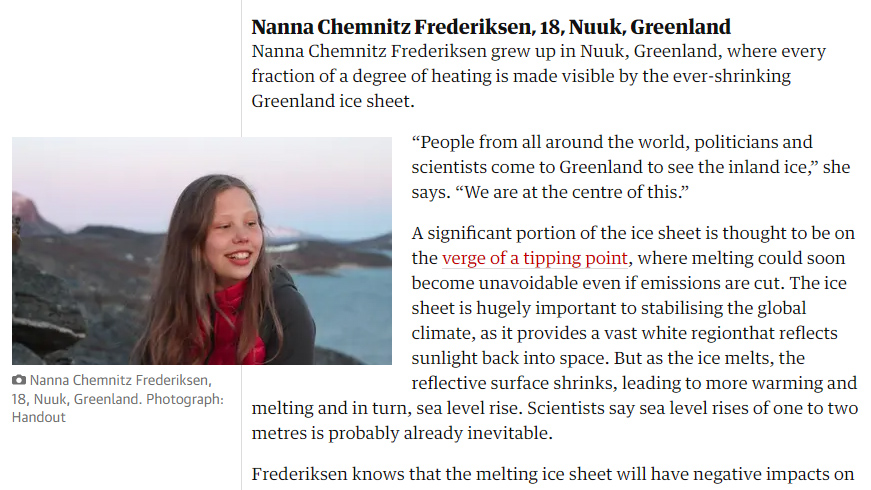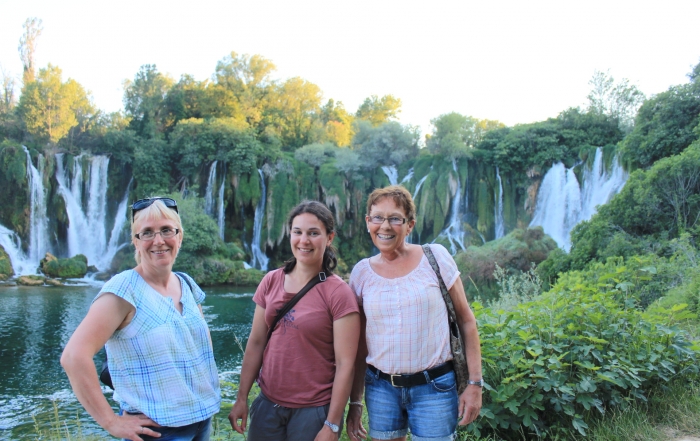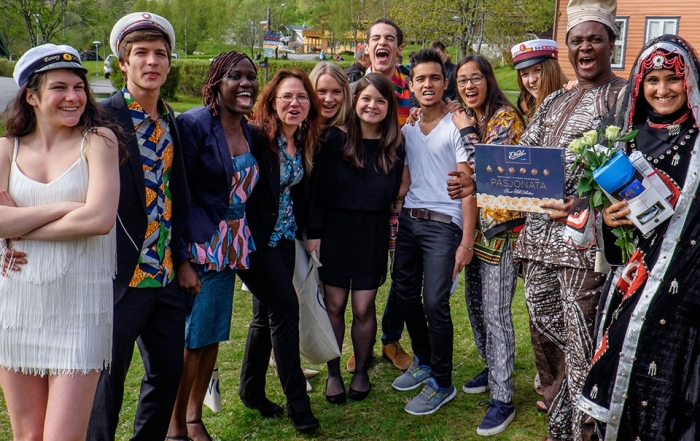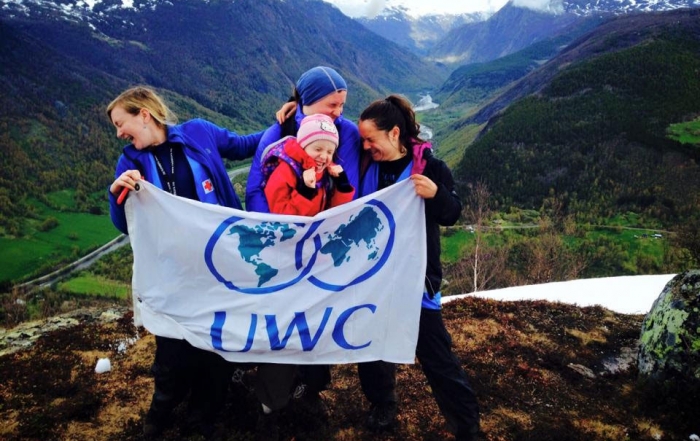“People from all around the world, politicians and scientists come to Greenland to see the inland ice,” she says. “We are at the centre of this.”
A significant portion of the ice sheet is thought to be on the verge of a tipping point, where melting could soon become unavoidable even if emissions are cut. The ice sheet is hugely important to stabilizing the global climate, as it provides a vast white region that reflects sunlight back into space. But as the ice melts, the reflective surface shrinks, leading to more warming and melting and in turn, sea level rise. Scientists say sea level rises of one to two metres is probably already inevitable.
Frederiksen knows that the melting ice sheet will have negative impacts on communities across Greenland, especially in northern settlements such as Qaanaaq where permafrost melting is destabilizing homes and roads and impacting how fishers and hunters operate.
But her real concern lies on the impact it will have globally. “I am not so scared of what the effects of the melting of ice in Greenland will be,” Frederiksen says, “It scares me what effect it can have for the rest of the world.”
Latest News
Irene Hagen: a tribute
It was with great sadness that we learnt on the morning of Thursday 18th June that Irene Hagen had passed away in Førde hospital following an extended period of illness. Irene had worked in the [...]
UWC Engagement
Help Shape the Future of UWC Community Engagement […]
Til topps 2015
Instead of going to school on the last day of classes, a large group of RCN students, teachers and volunteers, packed with big suitcases and backpacks for the summer, travelled with the Sogn og Fjordane [...]




